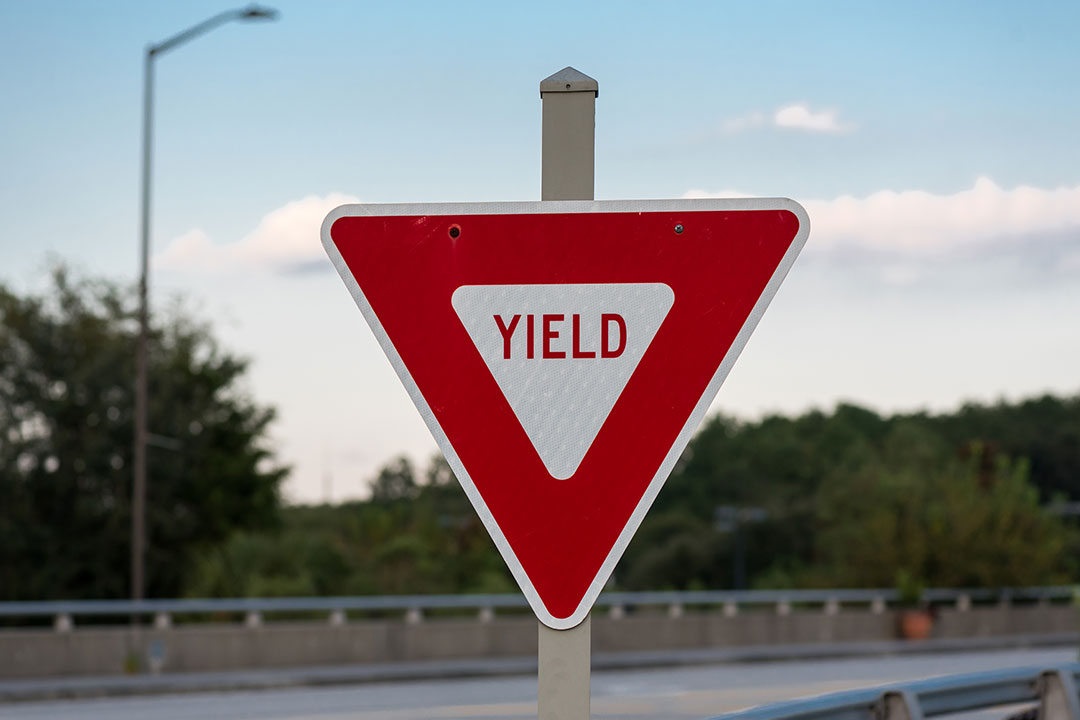When you first learn to drive, one of the main phrases you may have heard was “make sure to yield the right of way” when you encounter a yield sign or blinking light at an intersection. Yield signs and signals are meant to give traffic the right of way to vehicles driving on certain roads. These signs not only maintain the flow of traffic, but also prevent failure to yield crashes, such as those caused by merging and left turn intersection accidents.
As automobile accident lawyers, we know that failure to yield accidents can take you by surprise. We are here to walk you through the situations where a failure to yield may result in a serious car crash. Below are some of the most common situations that can cause failing to yield may cause a serious car accident .
Failure to Yield at a Designated Yield Sign
For many drivers, yielding can be a source of confusion or raise questions such as how long do I wait, when can I go, or who actually has the right of way?
Yield signs and signals are often placed in locations where drivers are merging onto a highway from another roadway, at roundabouts and across single lane bridges. These signs are denoted by a large white triangle with a smaller red triangle inside. Drivers are advised to pause and look at oncoming traffic before safely merging into the next street. A failure to do so often results in a t-bone accident or a sideswipe.
Failure to Yield at a Blinking Yellow Traffic Light
When you prepare to turn left at a blinking yellow traffic light, you must slow down and proceed with caution, and wait until it’s safe to drive through the intersection. A flashing yellow arrow tells you that you are allowed to drive in the direction the arrow is pointing but you are required to wait for an adequate gap in the opposing traffic prior to making your turn. Additionally, if you have a standard green light and want to make a left turn, you must yield before beginning your turn.
If you rush and fail to yield, you may be putting yourself and others at risk for a collision from a left turn accident. Left turn accidents from failing to yield can be as minor as a jolt to the body from being t-boned at a slower speed to a catastrophic impact where multiple cars are affected.
Failure to Yield Before Merging Onto or Off an Interstate Ramp
A vehicle that is about to enter onto a highway must yield to traffic already traveling on the highway before merging. If a vehicle turns right onto an entrance ramp to drive onto the highway, and hits an oncoming vehicle that has the right of way, the turning driver is likely at fault for the accident. The same goes for someone turning right off a highway ramp and onto a busy street; you must wait until there is a large enough gap in oncoming traffic to safely get onto the road.
Failure to Yield from Alleys & Driveways
When turning onto a road from a driveway or alley, there are certain rules to follow to avoid an accident due to a failure to yield to traffic.
According to Missouri law, a driver who is about to enter or cross a highway from an alley, a private road or a driveway must yield to vehicles approaching on the highway. In addition, if you are turning left into an alley, driveway or private road from a major road, you must yield the right of way to any vehicle approaching from the opposite direction when making a left turn that could create a traffic hazard like a left turn accident.
Remember, this particular type of failure to yield situation does not require designated signage- you can still file for a personal injury if someone hits you after coming out of an alley or driveway.
Failure to Yield in Roundabouts
Throughout St. Louis City and its surrounding counties, drivers may encounter situations where roundabouts are present. For example, St. Louis City has multiple roundabouts in Forest Park, including a larger one near the I-64 ramps on Hampton Ave and the St. Louis Zoo.
When entering a roundabout, drivers must yield to cars that are circling through it. Additionally, if it is a double lane roundabout, drivers must yield to all cars — not just the lane that is closest to them. Those who fail to yield in a roundabout increase their chances of causing a t-bone accident, head-on collision or rear-end accident.
Our Tips to Making Safer Turns in Yielding Situations
No matter where you drive, it is always important to stay alert to the situations you may encounter on the roads ahead. Yield signage, signals and driving rules are established to prevent a catastrophic accident from happening. If you were doing your part to follow local driving rules and were hit by someone who was failing to yield, our MHM legal team is here to help you move forward.
Contact us for a free consultation to begin building your case. For more legal advice related to driving, trucking accidents or personal injury, please visit our blog to find more information.
